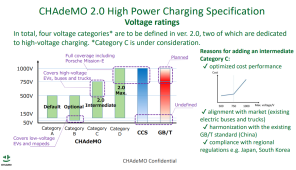jakepusateri
100K Ohm Resistor
I personally do not think the car communication will be the hard part. Everest has that part solved. I can build this board https://github.com/PionixPublic/reference-hardware#yak and it should work out of the box.
You guys do know that several companies already make PV systems with hybrid inverters that direct the PV into the EV DC charger right?
What about something like this ?For converting 500v at 30 amps dc (15Kw) to a different voltage, only one topolgy is practical, that is a push pull transformer coupled inverter.
You can put any secondary winding you want onto that to suit the required dc output voltage.
Cal suggested this way back at post #9, and he knows of what he speaks.

Toyota Prius has 20kW synchronous boost converter to step up 200V battery to ~500V for motor inverter. I modeled boost (and buck) converter in PowerEsim and got around 98.5% efficiency with SiC mosfet and diode after fine tuning inductor selection. I would not do 15kW in a single power stage since that would remove the benefit of single series string MPPT. I think 10A input / output 400V converter should be reasonable. Nice thing with boost converter the efficiency gets better the closer input voltage gets to output. PV array can be sized to have MPP real close to battery voltage for max efficiency and as panels get shaded and bypassed by diodes total power going into converter drops and output current drops as well.Nobody uses high power boost converters for one simple reason, the peak currents are just far too high to be practical.
One example:Got any links? The only ones I’ve heard of are SolarEdge and Entelligent, neither of which are out yet.
Is this AC or DC charger? Very important to be detail oriented……..
How would a non-crappy HF differ from crappy ones?If you check out how those (crappy) high frequency inverters work, you usually find the incoming battery voltage is first stepped up to usually around 350v to 400v dc, and then PWM'ed directly to create the higher voltage ac output.
But forget about a home built boost or buck converter at those kind of power levels.
They ALL suffer from the same problem.How would a non-crappy HF differ from crappy ones?
I totally agree. Voltage rations beyond 2:1 are better served by transformer topology. We are talking about boosting ~330Vmp panel string up to 330 - 400V battery at single series string current levels. This is exactly how it's done in HV input AIO hybrid inverters.The 48v (or whatever) boost stage up to the higher dc voltage, always use a push pull transformer coupled switching power supply, often in multiples to generate the high voltage dc. You never see the classic "boost converter" using flyback from a dc choke where large voltage differences or very high power are required.
Yes you are quite right.I totally agree. Voltage rations beyond 2:1 are better served by transformer topology. We are talking about boosting ~330Vmp panel string up to 330 - 400V battery at single series string current levels.
Maybe, but the hardware was originally built to do something reasonably specific, and there are definite limits to how far you can push that.If you can get CCS board, find a MPPT off AliExpress with enough programmability on the output voltage and current limit, and are competent to write the integration software, maybe you can make it work.
I would love to do that and not build the mppt, but I can’t find any that are for high enough voltage battery output and don’t also have an inverter in them (which I do not want, and increases the price). Happy for any links too.If you can get CCS board, find a MPPT off AliExpress with enough programmability on the output voltage and current limit, and are competent to write the integration software, maybe you can make it work.
I think the Hybrids with HV battery support are cheap-ish relative to the known alternatives. My headcanon is that they're making money off selling you the HV battery.I would love to do that and not build the mppt, but I can’t find any that are for high enough voltage battery output and don’t also have an inverter in them (which I do not want, and increases the price). Happy for any links too.
Most of the 800v cars have 400->800v converters onboard anyway so they can charge at 400v DC fast chargers. Minimum 50kW on the Taycan I think. I don’t plan on going near that power wise, so 400v is my target.Yes you are quite right.
Some here are talking about 15Kw and voltage boosting for potentially future 1,000 volt EV batteries.
Buck or boost converters work pretty well for slightly tweaking the voltage, more for precise voltage or current regulation than performing massive voltage changes.


